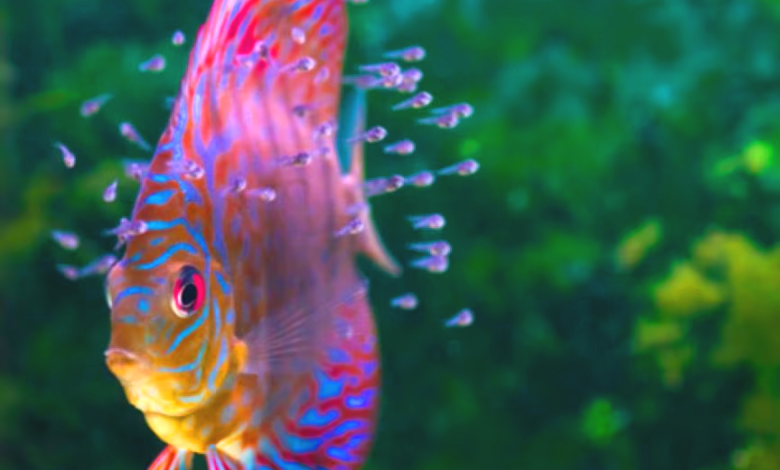
How to Plan a Single Species Aquarium
The majority of aquarists like having a variety of fish. When it comes to new enthusiasts, this is particularly true. It is possible to fulfill this sensitive spot for color, shape, and habit by using community tanks, which are aquariums that exhibit a large number of species and a diverse range of species. Nevertheless, as time passes and more expertise is gained, a significant number of aquarists gradually acquire an interest in a certain species of fish or invertebrate (or other relatively limited group).
How to Plan a Single Species Aquarium
An aquatic animal may be able to blend in wonderfully with a traditional society in some circumstances, but in other circumstances, it is advisable to house it by itself. In the second scenario, the specimen should be housed in an aquarium that is specifically designed to meet its requirements, known as a species tank.Single species aquarium may be kept alone or with other specimens of the same sort.
Read More : Is Toilet Water Safe for Pets to Drink?
Keeping a single species in a tank is not at all boring. In point of fact, they have the potential to be far more distinctive and aesthetically pleasing than the more normal assortment of species used in a community tank. They provide the keeper with the chance to create the most joyful and healthy environment possible for their beloved animal, which is the most important benefit.
Why Choose a Single Species Tank Set-Up?
It is possible to cultivate freshwater, brackish, or marine livestock in a species tank that has been constructed. A species tank is required for the housing of some animals, however any animal may be housed in one.
There are a handful of reasons why one would opt to set up a species tank. These include:
- The species requires an unusual type of habitat
- The species is exceptionally timid or delicate
- The species is exceptionally aggressive/territorial
- The species is predatory
- The species prefers to live with large numbers of its own kind (i.e., colonies or schools)
- The species exhibits slow or highly specialized feeding behaviors
Fish Species that Need Their Own Tanks
In the majority of cases, a species tank is the most suitable enclosure for animals that need a specific physical habitat. This is especially true if the environment in question is not suitable for the majority of other species. In the case of a mudskipper, for instance, the tank plan would mostly consist of terrestrial or extremely shallowly submerged substrates, which would make it difficult for other fish to coexist with those species.
As a similar point of reference, the majority of fish shop species, which are mostly tropical, are not suitable for keeping in a tank that is designed for fish that live in chilly water, such as darters.
It goes without saying that timid or sensitive species should be kept apart from other animals. As an example, the long, draping finnage of a Pantadon Butterflyfish is likely to be nibbled off by the other fish in the tank for the same reason. It is possible for a timid species like a Fire Eel to experience stress if its hiding spot is constantly violated by bottom dwellers that move about, such as Corydora Catfish.
In order to ensure the comfort and safety of various species of animals, it is possible to construct their single species aquarium, taking into consideration everything from the design of the tank to the lighting to the materials used for aquascaping.
Due to the fact that aggressive interactions almost always end in the death of fish, an aquarist may find themselves in a situation where they have little alternative but to maintain an extremely aggressive species by themselves.
It is a common misconception among aquarists that only carnivorous animals are capable of displaying aggressive behavior. However, many herbivores, such as a significant number of “mbuna” cichlids, are capable of displaying very vicious behavior while protecting their territory. There is a possibility that some species, like the Jack Dempsey Cichlid, will not tolerate the presence of any other individuals in their immediate vicinity (with the possible exception of a potential mate).
Even while it is possible to securely house predators in groups that have been carefully created, it is recommended to keep them in isolation. Gulper Catfish are examples of well evolved predators that, as they mature, become capable of swallowing the majority of other fishes, even those that are the same size as themselves.
Additionally, Exodon Tetras, which consume the scales and fins of other fish, are capable of hunting down people that are far bigger than themselves. In addition, the extremely carnivorous Piranha have the potential to consume one another if they are not maintained in huge groups or by themselves.
The Safety of a Single Species Tank
In some circumstances, a species tank may be designed to contain large groups of a species in order to have a great visual effect (which it does well), but also to provide the group with as much room and protection as is feasible inside the tank. For instance, a large school of Harlequin Rasboras may be provided with a substantial open swimming area, and a breeding colony of Brichardi Cichlids can raise their young without the risk of being threatened by cohabitants that consume baby fish.
When they are housed in a communal tank, there are some types of fish that simply do not get the amount of food that is appropriate for them. This is due to the fact that they are sluggish eaters or need help while eating in a confined environment. As an example, seahorses have a need to consume little quantities of food throughout the whole day.
They like to consume live meals, such as adult brine shrimp, and, in certain cases, they solely consume live foods. It is obvious that this kind of feeding would not work in a communal tank since the faster tankmates would quickly get severely overfed before the seahorses could even get a single mouthful.
This is true for a great number of predators that ambush. Due to the fact that these fishes need their meal to come to them, it is possible that they require some time for the appropriate chance crossing to take place before they attack. Consequently, if a Fugu Puffer is maintained alongside a Siamese Tigerfish, which is a wandering predator that kills on sight and is lightning quick, it is possible that the Fugu Puffer will never obtain its feeder goldfish.
The Visual Beauty of a Single Species Tank
One last possibility is that an aquarist may construct a species tank just for the purpose of showcasing and highlighting a certain animal. It’s true that a single fish in an aquarium may make it appear very stunning. Despite the fact that these species tanks are most often seen in public displays, there is no reason why a home aquarist should not be able to show Single species aquarium , single-specimen aquariums for the sole purpose of enhancing their visual presentation.
Read More : The Importance of Mental Stimulation for Pets
At times, it may be challenging to maintain an absolute purist stance when it comes to the maintenance of species tanks. It is also possible that a small number of acceptable heterospecifics, which are other species, might be considered helpful for utilitarian reasons and are therefore kept alongside the species that is being targeted.
It is possible, for instance, to keep a large breeding colony of guppies as a resident food supply for a gar. As an alternative, a Red Devil Cichlid could be housed with a huge Pleco Catfish to serve as a housecleaner. For this reason, a species tank is always designed with the primary purpose of housing the species of interest, taking into consideration the particular environmental requirements of the species.








One Comment